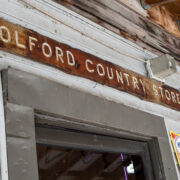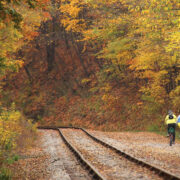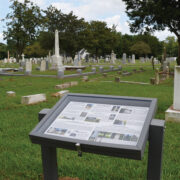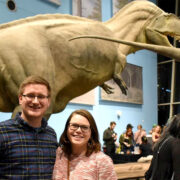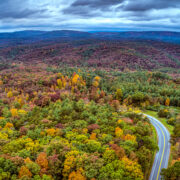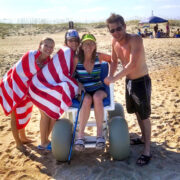Step Into a Storybook Village Off I-495
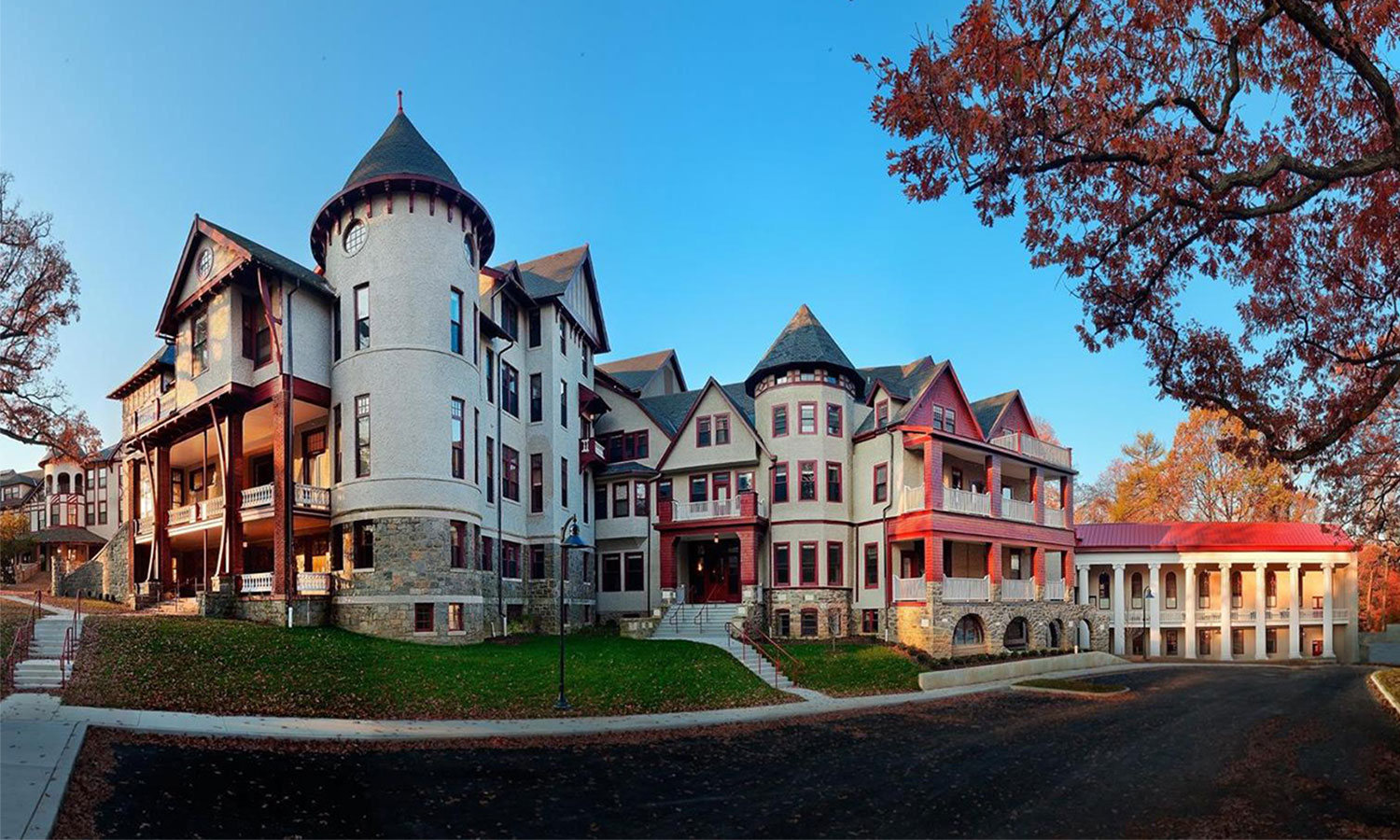
I felt like I was in a storybook village as I strolled the grounds at National Park Seminary at Forest Glen, a historic residential community along the Capital Beltway in Silver Spring. The leafy neighborhood is known for its eclectic single-family homes that include a Japanese pagoda, Swiss chalet, and Dutch windmill. The hotel-turned-school-turned-military installation was in poor condition a couple of decades ago—now, the renovated grounds are a fascinating place to explore.
Visitors to National Park Seminary are welcome to follow the self-guided tour, but the best way to experience the property is to take one of the walking tours led by the nonprofit Save Our Seminary at Forest Glen. Walking tours are held on the fourth Saturday of each month from March through November. The tour I took in summer 2021 was led by board member Frank Riley whose knowledge, enthusiasm, and wit kept me and my fellow attendees engaged for the approximately two-hour circuit.
Riley provided an overview of the 23-acre property’s past as we stood in front of the Gymnasium, a commanding Greek Revival-style building constructed in 1907 that was recently restored and converted into a dozen condominiums. The Ye Forest Inn opened at Forest Glen in 1887 and was intended to be the centerpiece of a real estate development, but it shuttered in 1894.
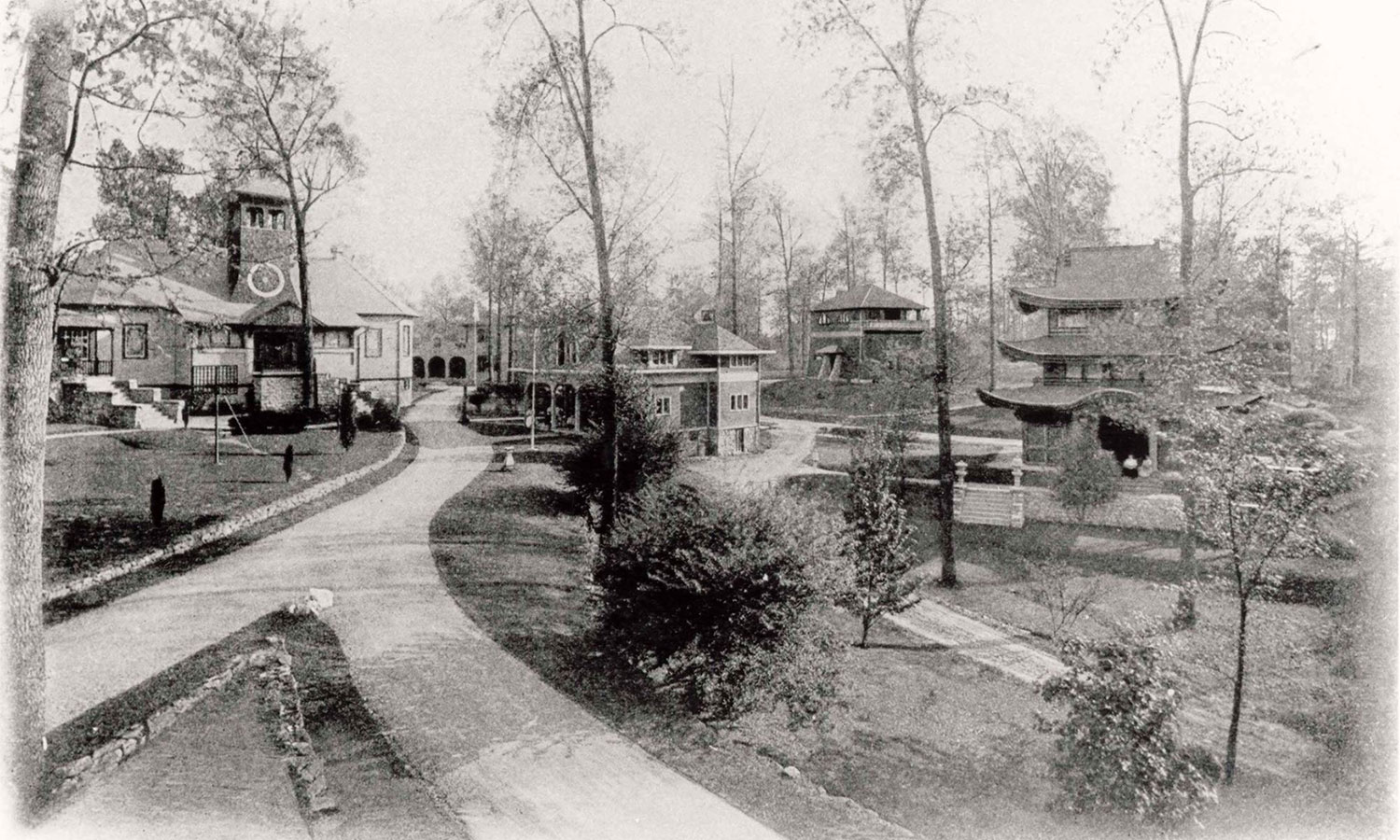
For the next half-century, the property served as an exclusive private school for young women and was renamed National Park Seminary. The school constructed additional buildings, and the grounds were decorated with bridges, gardens, and statues, some of which have been painstakingly restored.
Riley led us past the pagoda, chalet, and windmill, all of which originally were constructed as sorority clubhouses. I was particularly impressed by the picturesque pagoda with its roofs stacked like a layer cake.
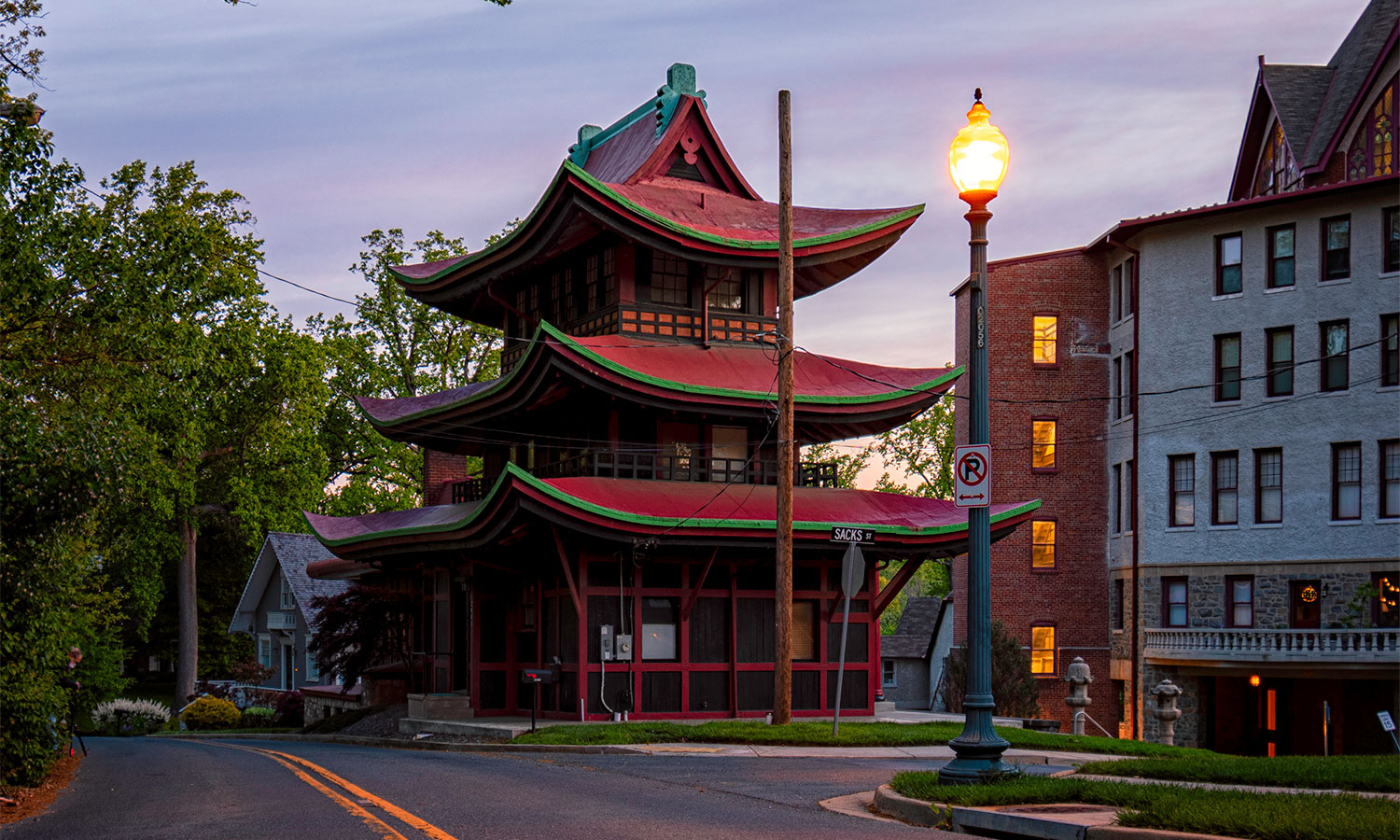
Riley also pointed out the Castle, another former sorority house that remains unrestored in the glen.
The former clubhouses surround the rambling Main Building, a structure that would look at home on a mountain in the Alps. This was the first structure built here, and Riley pointed out the stained-glass sign that reads “Ye Forest Inn” still intact over the entrance. Today the Main Building contains about 100 condos and apartments. Riley took us inside one of the inviting units, and I was impressed at the view of the dense vegetation that screened the Capital Beltway from sight.
During World War II, the Army bought the campus to house convalescing soldiers, and it continued in that capacity through the Vietnam War. Unfortunately, the Army struggled to upkeep the expansive site, and the buildings either fell into disrepair or were razed. “The business of the Army is not preserving buildings; the business of the Army is knocking down buildings,” Riley quipped.
Save Our Seminary was formed in 1989 with the seemingly insurmountable goal to return the property to its pre-World War II grandeur. Its organization and persistence paid off in 2004 when the Army relinquished its ownership, and a developer began its piecemeal conversion of the buildings into residences. A total of 89 new townhomes were built to help offset the cost of the rehabilitation work. Today National Park Seminary and its mix of historic and new homes is a thriving residential community.

The tour reached its climax when we entered the Ament Ballroom, an ornate space that resembles a medieval cathedral. Built in 1927, the ballroom was the center of the school’s social events, which included the annual dance to commemorate George Washington’s birthday when half the girls dressed as the nation’s first president and the other half dressed up as his wife, Martha. The ballroom is available to rent and often hosts Save Our Seminary lectures on topics related to the location’s rich history.
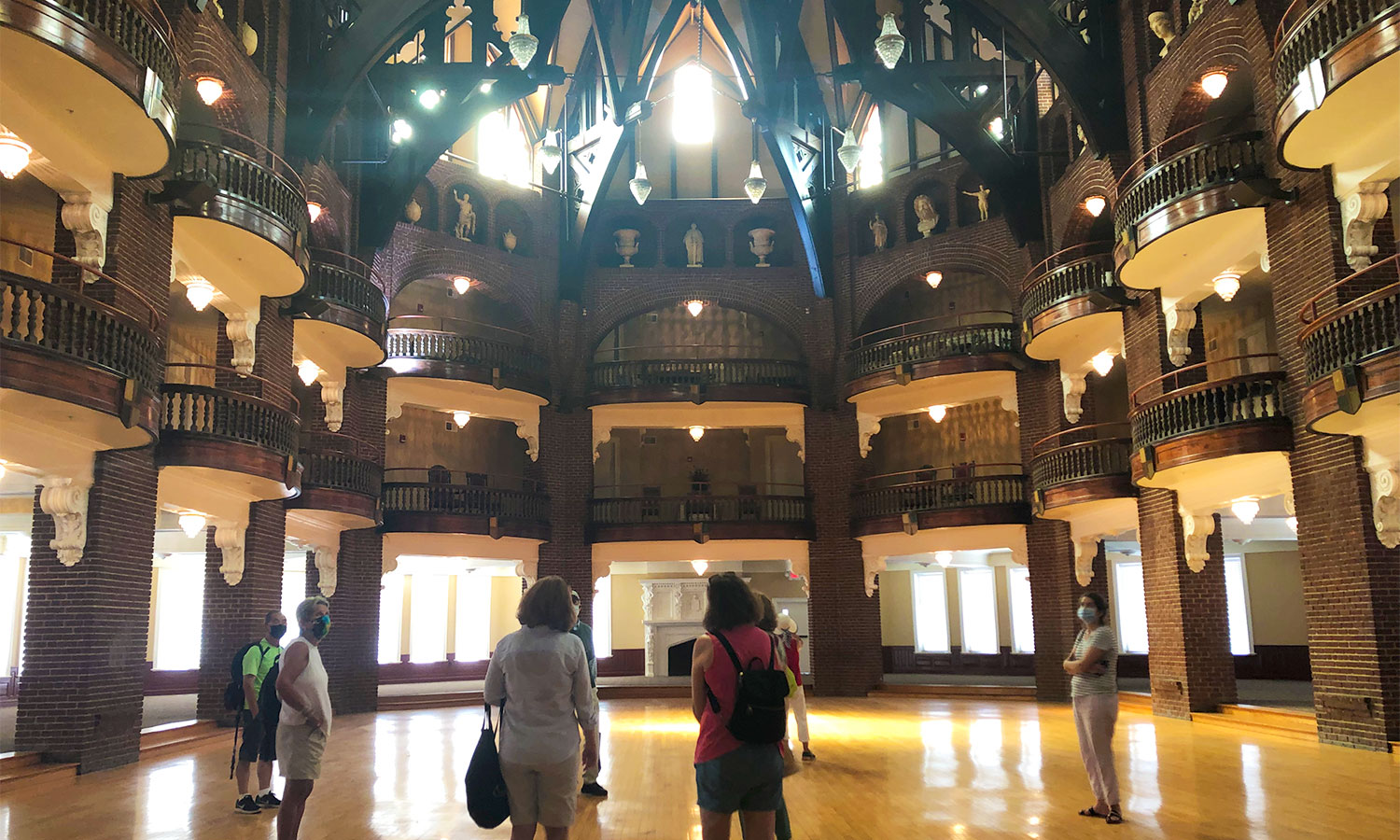
With the upland portion of the site preserved, Save Our Seminary has turned its attention to the thickly wooded glen where architectural features crumble and invasive vegetation thrives. Bonnie Rosenthal, Save Our Seminary’s executive director, is proud of what has been accomplished at National Park Seminary thus far. “It’s just an amazing place—to have a castle, pagoda, and Swiss chalet all in one place other than Disney World is unique architecturally,” she said. “It’s a good recycling story.”
Make It a Weekend
Keep up the oddity-vibe and check out the National Museum of Health and Medicine, located just a few blocks from the National Park Seminary. Its exhibits include medical oddities and the bullet that mortally wounded President Abraham Lincoln. Then head to Vanadu Art House, an unexpected artscape in the middle of a Hyattsville neighborhood.
Want to see more of Maryland? Check out this road trip itinerary of spots outside D.C., or head north for a trip along I-95.
Lead Photo: Jeff Wolfram
About the Author
Chris Berger
Chris Berger works as an urban planner and is fond of Maryland’s historic architecture, nature, and sporting traditions. He lives in Montgomery County with his wife, daughter, and dog. You canfollow him on Instagram @cjberger1.

